Like any computer, your MacBook may generate heat during use. When upgrading to a new macOS version, updating some apps, or powering on for a long time, a high temperature is a serious issue.
Monitoring your Mac's temperature is important, especially if you are experiencing performance issues, unexpected shutdowns, or fan noise.
What is a safe operating temperature for my iMac desktop? How can I check the temperature? -discussion.apple.com
I am new to macOS, and I don't know what app I should use to monitor my temperature. -reddit.com
In this article, we'll show you how to check your MacBook temperature using different methods and share tips on how to cool it down if it's running too hot.
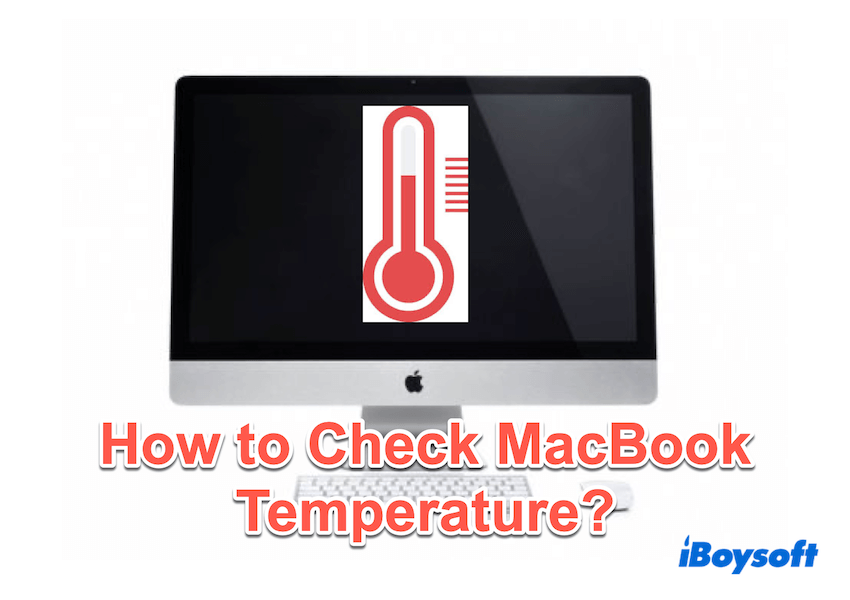
How to check MacBook temperature
Under normal usage, your MacBook CPU usage temperature typically ranges between 40°C to 60°C (104°F to 140°F). During intensive tasks like video editing or gaming, temperatures can spike to 80°C or even 90°C (176°F to 194°F).
While occasional high temperatures are normal, consistently running hot can shorten your Mac's lifespan or impact performance.
Let's check MacBook CPU temperature with these methods:
# 1 Use Terminal commands
For tech-savvy users, macOS allows you to check the temperature via Terminal by installing Homebrew on Mac.
- Finder > Applications > Utilities > Terminal.
- Install Homebrew if you don't have it yet, type /bin/bash -c "$(curl -fsSL https://raw.githubusercontent.com/Homebrew/install/HEAD/install.sh)" and press the Enter key.
- Type brew install osx-cpu-temp to install the temperature monitor tool.
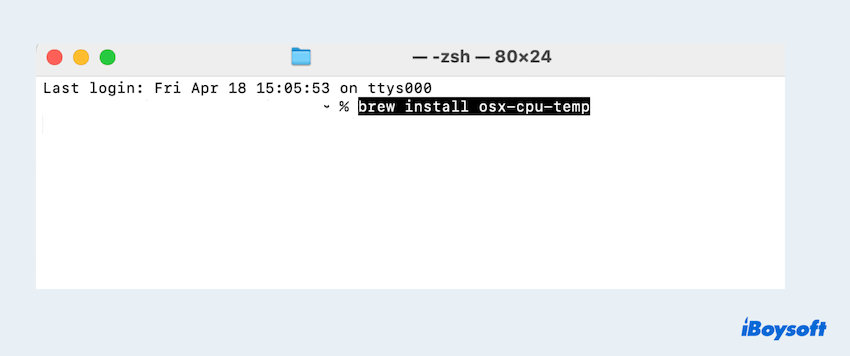
- Type osx-cpu-temp and press the Enter key.
This will display the current CPU temperature in Celsius (or Fahrenheit).
# 2 Use iBoysoft DiskGeeker for Mac
If you prefer a more user-friendly solution, iBoysoft DiskGeeker for Mac offers a built-in feature to monitor hardware temperature directly. Free to see the real-time temperature and health situation, not only for the internal drives but also for the external drives.
- Free download, install, and open iBoysoft DiskGeeker for Mac.
- Choose your internal drive (usually called Macintosh HD/ Macintosh HD - Data )or external drive on the left side.
- You can directly see the temperature near Health, which is colored blue.
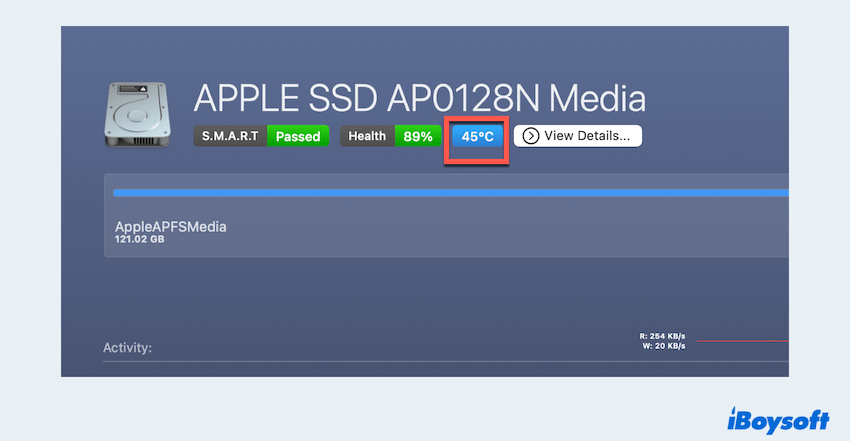
For more information, click View Details, you can see more specific details. Besides, you can use it to create a bootable installer for macOS, clean junk files, map network drives, backup APFS drive's data and so on.
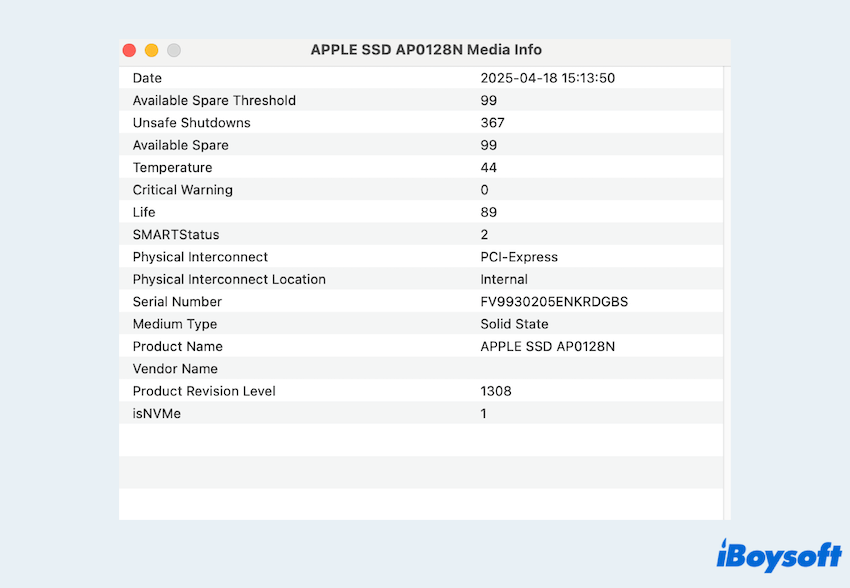
# 3 Use Activity Monitor
While the macOS Activity Monitor doesn't show temperature directly, it helps identify resource-heavy apps that may be causing your Mac to heat up:
- Finder > Applications > Utilities > Activity Monitor.
- Click the CPU or Energy tab.
- Sort by % CPU to spot apps using the most processing power.
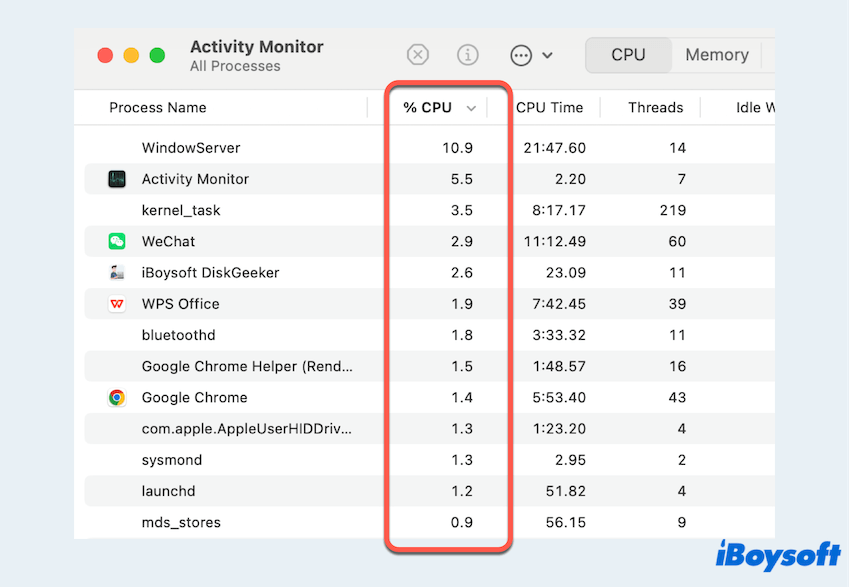
- Shutting down unnecessary high-usage apps can help keep temperatures in check.
Do you know how to check MacBook temperature? If you have other solutions, share and leave your methods.
Tips: How to lower Mac temperature if it's too high
If your MacBook is overheating, try these tips to cool it down:
- Close unused apps: Reduce CPU load by quitting background applications.
- Use a cooling pad: Elevate your MacBook to improve airflow.
- Avoid soft surfaces: Use your MacBook on a hard, flat surface to prevent overheating.
- Reset SMC: The System Management Controller (SMC) regulates temperature and fan behavior.
- Control fan speed: Use apps like Macs Fan Control or TG Pro to adjust fan settings manually.
Keeping an eye on your MacBook's temperature is essential for maintaining performance and prolonging its lifespan. Whether you prefer using Terminal commands or a third-party app like iBoysoft DiskGeeker for Mac, monitoring your system's heat levels is simple and effective.